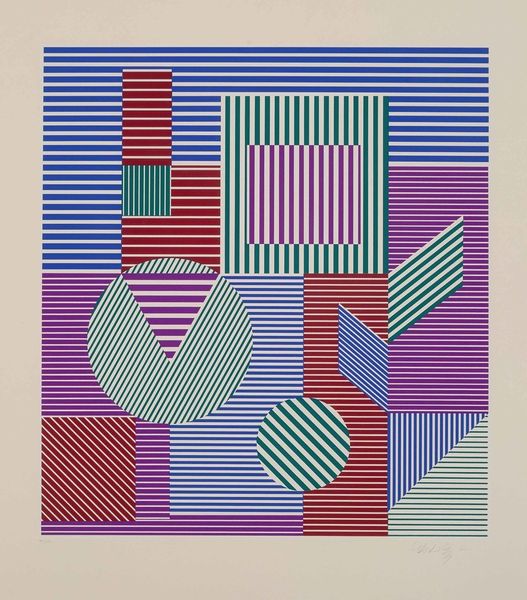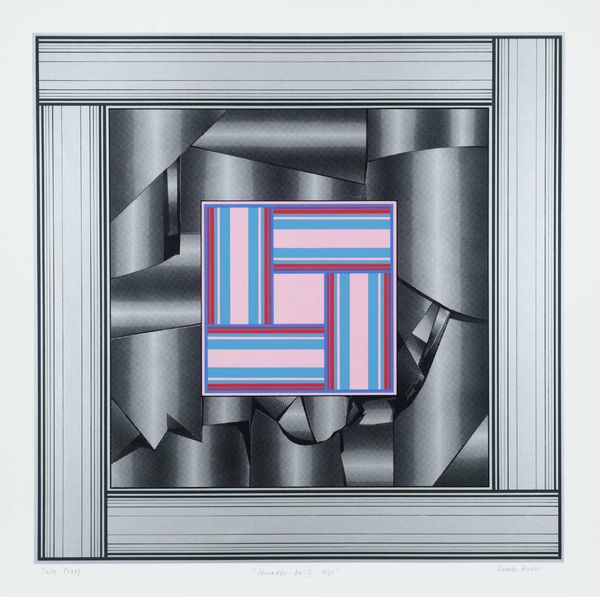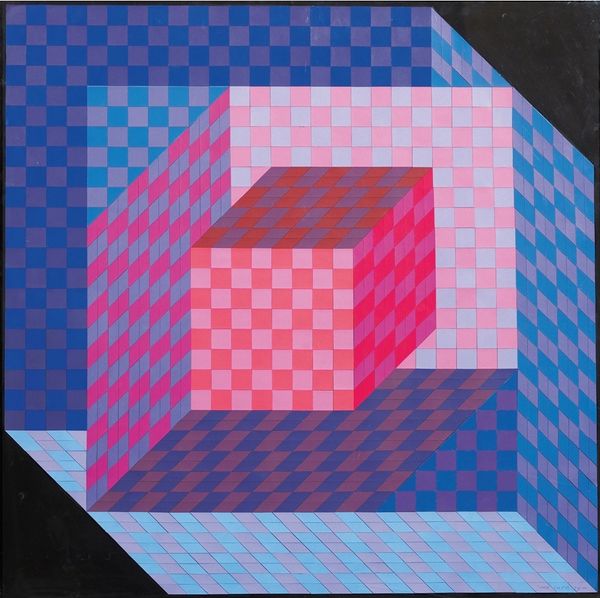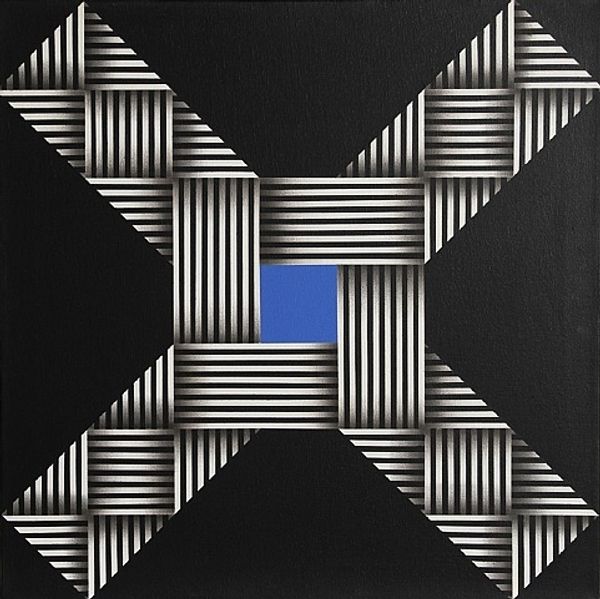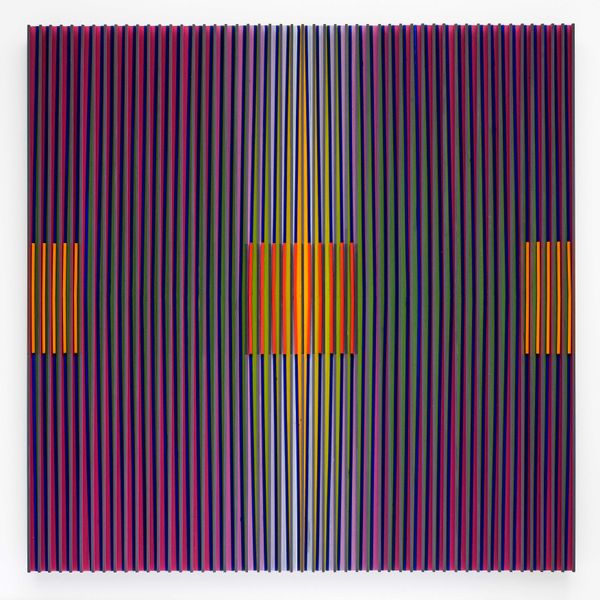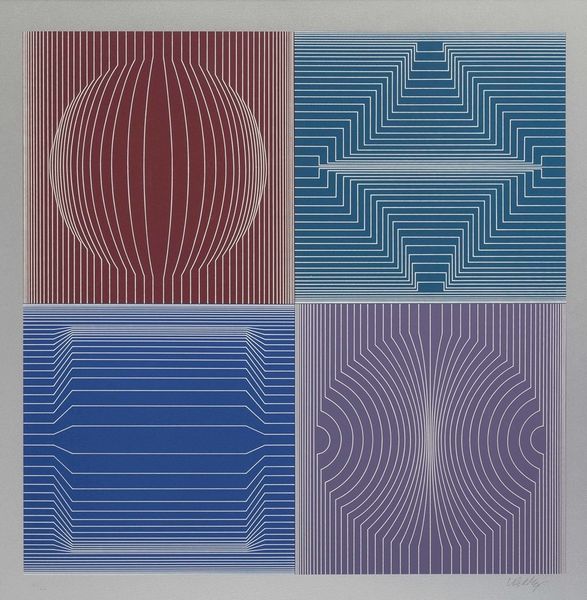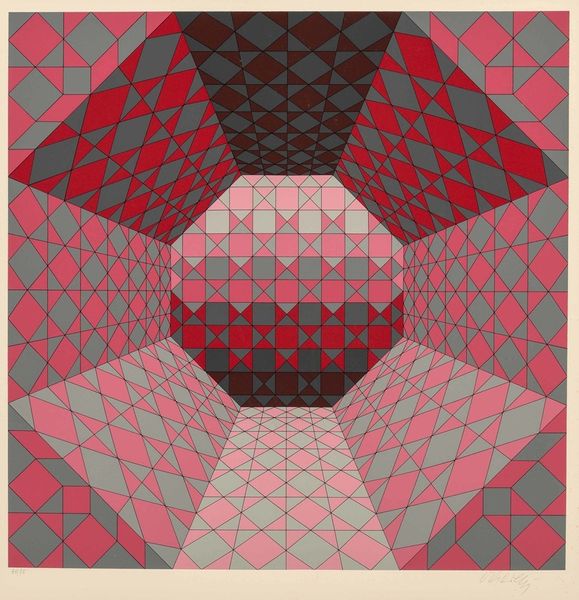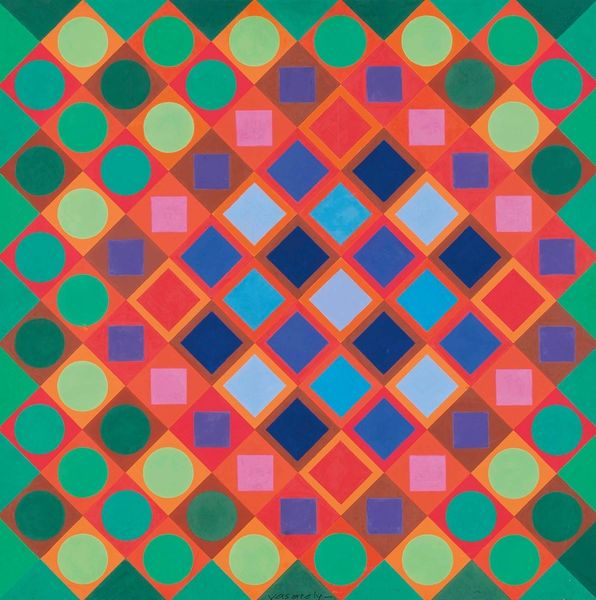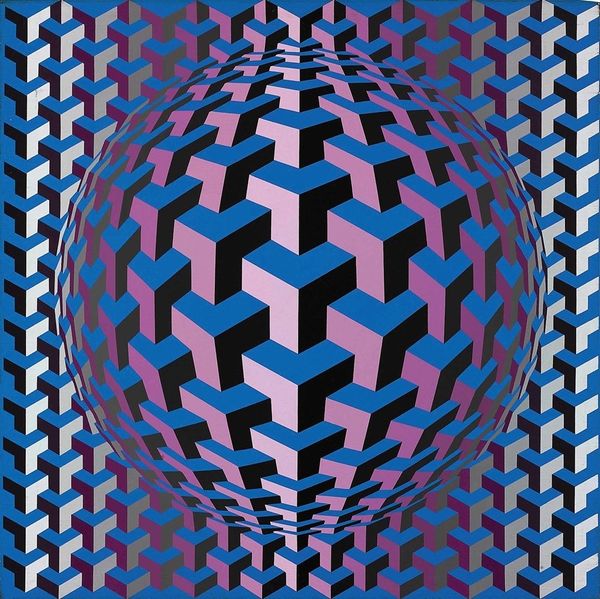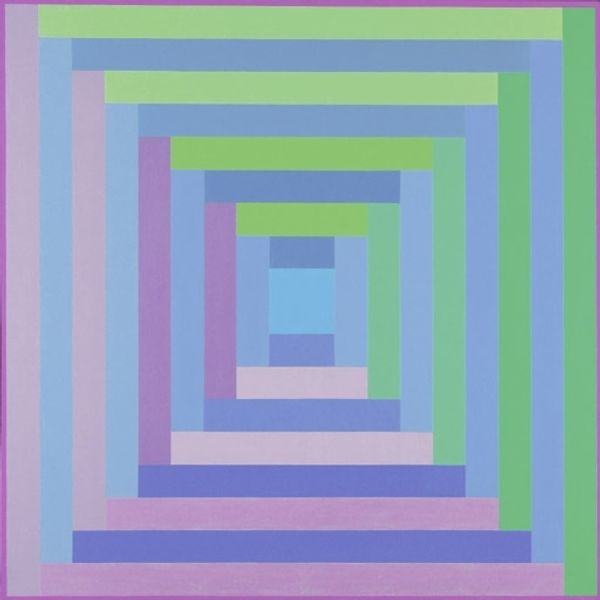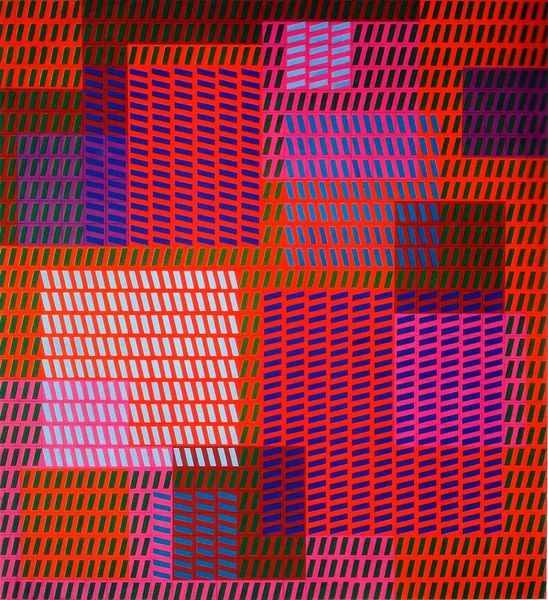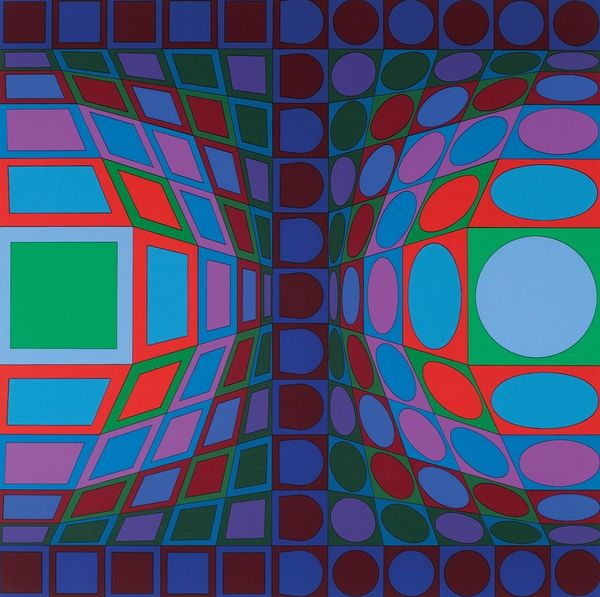
#
random pattern
#
abstract
#
abstract pattern
#
repetitive shape and pattern
#
minimal pattern
#
organic pattern
#
repetition of pattern
#
vertical pattern
#
pattern repetition
#
layered pattern
#
combined pattern
Copyright: Modern Artists: Artvee
Curator: Looking at Victor Vasarely’s “Hatur” from 1991, it strikes me as a fascinating example of late Op Art. Editor: It’s definitely arresting. Visually, I immediately get a sense of dynamic, almost vibrating energy from the juxtaposition of those intense reds and blues. It practically leaps off the canvas. Curator: That visual vibration is precisely what Vasarely was aiming for. His art operated in the context of the post-war technological boom, echoing industrial precision and optimism. These patterns, rigorously geometric, are meant to explore human perception within an increasingly mechanized world. Editor: Right, I see how the almost clinical application of color enhances this feeling of the mechanical, contrasting and competing to trick the eye. But I’m curious; how did Vasarely’s social ideals tie into these visual experiments? Curator: Vasarely fervently believed that art should be accessible, useful, and integrated into daily life—an art for all, not just the elite. This explains his tendency towards reproducible, often monumental pieces meant for public spaces, reflecting a democratic ethos. The patterns’ interaction aims to engage viewers directly, free of traditional art world constraints. Editor: It seems that, by removing explicit narrative or symbolic depth, he forces you to confront pure visual experience. It is very much about the materiality and effect, and the artwork itself becomes a site for testing perception, like a philosophical or neurological puzzle. Curator: Absolutely. This engagement shifts art's function from reflecting societal norms to actively shaping sensory awareness. It embodies the utopian spirit of the time, hinting at art’s capacity to remodel our environment and cognitive processes, while being aware of sociopolitical currents that made these forms popular and possible. Editor: It is indeed a captivating confluence of visual science and social aspirations. This work provokes much consideration regarding form and function. Curator: Indeed. It's quite enlightening to view “Hatur” not merely as a visual spectacle but as a signifier of broader social and cultural transitions during its time.
Comments
No comments
Be the first to comment and join the conversation on the ultimate creative platform.

